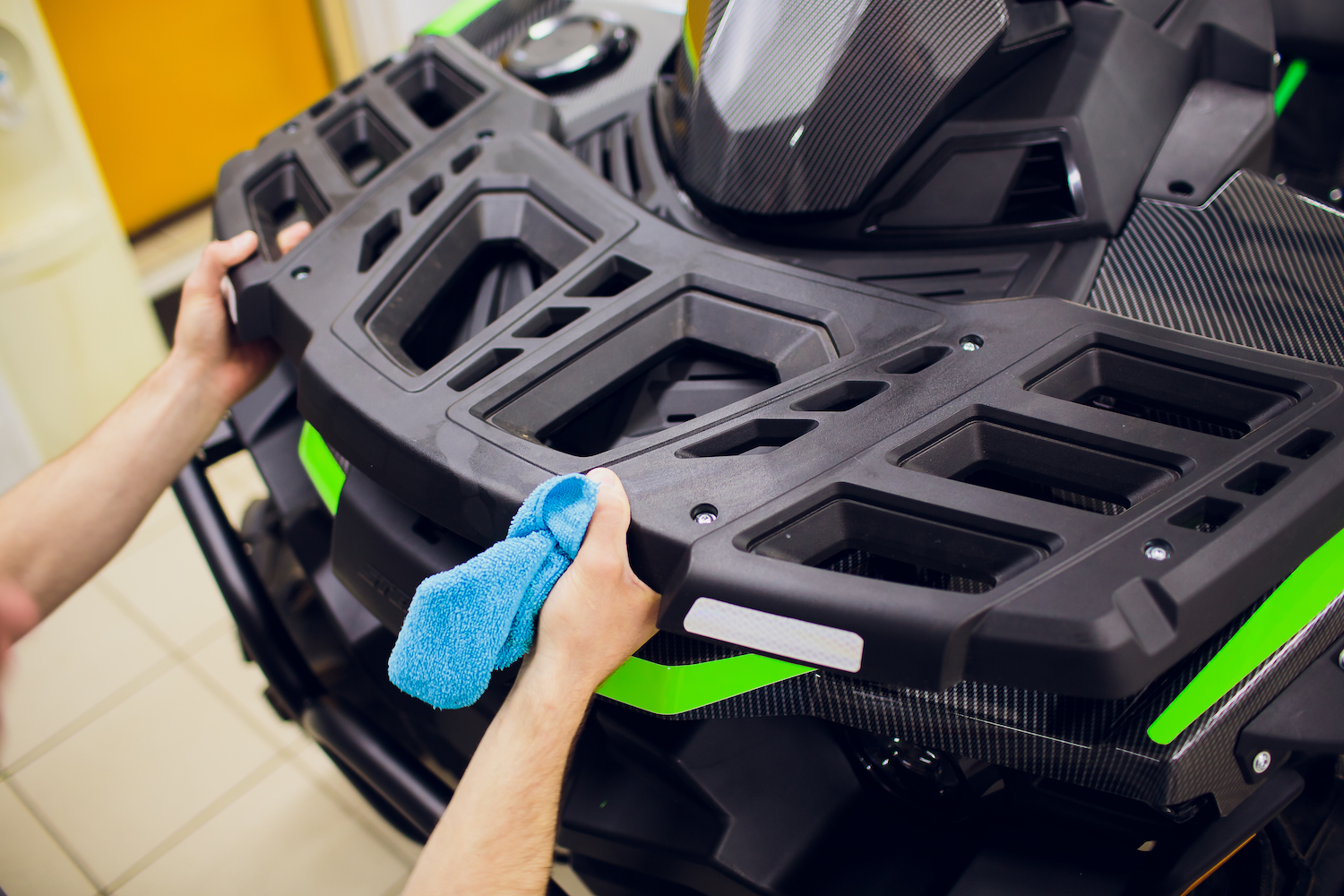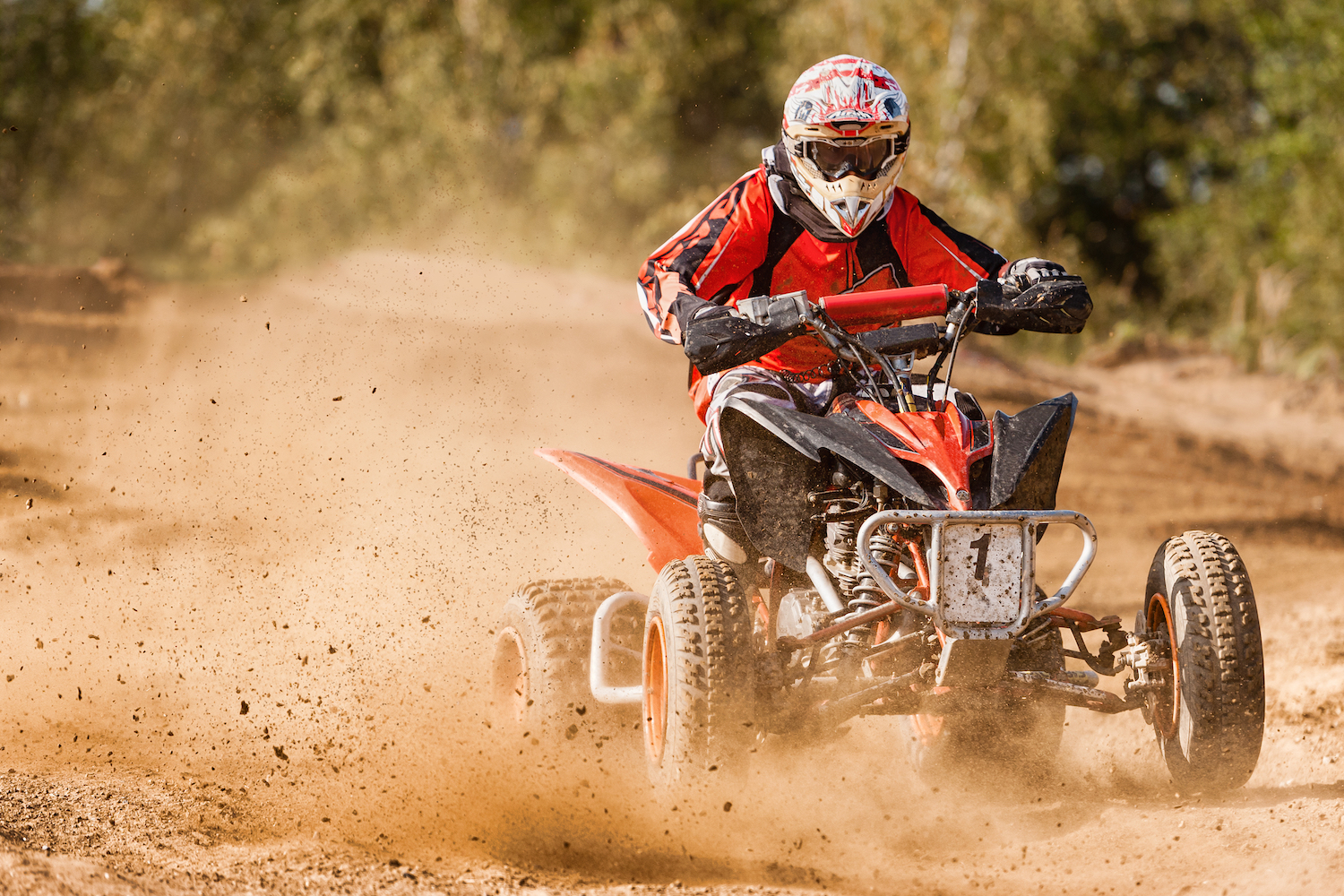ATV Maintenance Guide
Posted by ZM Performance on Oct 15th 2021

Whether the thought of tackling your own ATV maintenance sounds easy or intimidating, our off-road vehicle maintenance guide will help you ensure the safety and dependability of your ride all year round! With some general ATV maintenance guidelines, professional tips, and a few how-to’s sprinkled throughout, you can rest easy knowing that your ATV will be in top shape!
*It’s important to note that this guide is not intended to to take place of or override any of the maintenance requirements, advice, or suggestions provided by the manufacturer in the Owner’s Manual of your off-road vehicle.
ATV Maintenance and Off-Road TLC
Since we have yet to create an invincible ATV, our current off-road models still need a little routine care from time to time. So, if you're one of the intimidated home mechanics, don’t fret. This short, easy to read off-road vehicle maintenance guide will have you talking oil filters, drive belts, and coolant levels in no time.
Quick Tip: Before beginning any maintenance it's good to get into the habit of grabbing a pen and notebook on the way out the door. A solid routine of documenting what was done, who did it, and when, will pay off in more ways than one. Not only will this register of vehicle care help diagnose random, unforeseen issues, it will encourage you to keep up the great work and play more often!
Plan Ahead for Your ATV Maintenance
To be proactive about your maintenance you have to be able to plan ahead accordingly. This requires an understanding of the depth of tentative work that comes along with each process, which can be difficult for novice mechanics. Fortunately for us home-mechanics, this means that some days will require less work than others; and some days more.
When trying to schedule your ATV maintenance, it’s important to remember that the amount of time required for off-road vehicle maintenance will differ depending upon what’s being done that day. These time frames will, of course, change overtime as you become more adept at navigating your engine and its components. Being aware of your own average completion times, as well as that of the local pros, may help mitigate scheduling issues in the future.
Off-Road Vehicle Maintenance Frequencies
While setting aside the right amount of time to properly maintain your ATV is important, knowing when to do so is even more critical. Each owner’s manual provides a standard maintenance schedule for your off-road vehicle that will correspond directly to the frequency and quality of use. Most manufacturers will break down their guidelines by months, hours, and miles. Common frequency breakdowns include:
- Monthly ~ 25H ~ 250 Miles
- Quarterly ~ 50H ~ 500Miles
- Biannually ~ 100H ~ 1000 Miles
- Annually ~ 100H ~ 600-1000 Miles
- 2 Years ~ 200H ~ 2000 Miles
- 3 Years ~ 300H ~ 3000 Miles
- 500H ~ 5000 Miles
Off-Road Maintenance for Extreme Riders
Depending on the style and capabilities of your ATV, the quality of use alone may dictate the maintenance schedule. For example, some ATVs are designed with racers in mind! The owner’s manuals for these exclusive models define what constitutes serious or extreme use and includes a separate section covering the specialized care and maintenance required to keep them running smoothly.
Off-road racers and utility workers tend to fall under the category of extreme riders and must follow additional safety precautions and maintenance tasks to ensure capability and performance. Manufacturers advise these adrenaline junkies to strictly follow all safety inspections including pre-ride, daily, and weekly QA checks. Common specifications for serious or extreme use are:
- Frequently immersed in mud, water or sand
- Frequent / prolonged use in dust environments
- Frequent pulling or towing
- Racing or high RPM use
- Prolonged low speeds under stress
- Extended idle
- Short Term Use in Cold Weather
If that list of activities sounded like yesterday’s to-do list, you have a lot of QA testing to do. Off-road vehicles that fall under the extreme use category must be routinely checked from top to bottom. The following list of items to be checked is not exhaustive:
- Air filter (Main element) - Engine breather
- Engine oil - Front gearcase fluid
- Transmission fluid- General lubricants
- Front/rear suspension- Throttle cable
- ATV drive chain- Engine mounts
- Spark plugs- Radiator
- Cooling hoses- Wiring
- Coolant- Valve clearance

How To: ATV Oil Change
The following how-to was designed to encourage current owners to take control of their ATVs health by getting them out of the garage and back in the dirt! Without getting into too much detail for any specific make or model, we’ve outlined a general step-by-step for changing your ATV’s engine oil. On average an oil change takes about 30 minutes, but if you’re just beginning your maintenance journey we recommend giving yourself about an hour to ensure accuracy and safety.
Before beginning the possibly messy process of changing your oil, there are a few things that need to be noted:
- Never check the oil level when the oil is hot. Hot oil will make the oil appear more full or even overfilled, and it’s hot!
- Never substitute or mix oil types.
- Never overfill oil. Oil level should be between FULL and ADD marks on the dipstick.
- Never start an oil change without: the proper oil, oil filter, wrench, drain pan, funnel, gloves, and stands as necessary.
- Never change the oil without changing the filter.
Step-By-Step ATV Oil Change
- Park the vehicle on a flat surface and apply the brakes.
- Start the engine and allow it to idle for a few minutes. This helps loosen up the oil and help it drain a little faster.
- Turn off the engine and carefully clean the area around the drain plug.
- Remove the drain plug and allow the oil to drain into the pan.
- Avoid coming in contact with the oil. Even after only a few minutes of run time, it will be hot enough to burn.
- Next, remove the oil filter and clean the filter sealing surface with a clean dry cloth.
- Remember to completely remove the old O-ring, too.
- Before installing the new filter, check the rubber o-ring for imperfections and lubricate it with fresh engine oil.
- Install the new filter by hand, turning the direction and duration specified in the owner’s manual.
- Reinstall the drain plug to the amount of torque specified in the manual.
- Refill the fluids.
- Clean away all dirt and debris from the dipstick area before removing the dipstick.
- Once removed, fill the sump with the recommended amount of oil.
- Reinstall the dipstick and tighten.
Oil Change QA Process
- Make sure the vehicle is parked on a level surface, with the brakes applied.
- Start the engine as you would normally and allow it to again run for about 2-3 minutes.
- After 3 minutes, stop the engine and inspect all addressed areas for leaks.
- Recheck the oil on the dipstick for proper oil levels.
- Add oil as necessary.
- Remember to dispose of the used filter and oil properly. To learn more check out this article on how to properly dispose of used motor oil.
Do I Add Antifreeze or Coolant?
The shortest answer here is: Yes.
While it can be more scientifically broken down, novice mechanics will be happy to know that antifreeze and coolant are pretty much the same thing. Like frozen juice concentrates, antifreeze just happens to be the dehydrated version of coolant. Antifreeze and coolant come in many different colors and varieties depending on make and model of your ATV but aimlessly adding any combination of coolant or antifreeze is not safe. The owner's manual will specify the necessary types and amounts of fluids for your off-road vehicle.
Your engine’s coolant levels are one thing you don't want to overlook before a weekend ride. Controlled by the engine recovery system, the engine’s coolant levels are one of the most important parts to keep in check. The recovery system includes an overflow bottle, radiator filler neck radiator pressure cap and connecting hose. To ensure maximum efficiency of all included parts, fluids should be drained completely and refilled with the type of antifreeze specified for your toy. This should be done about every 5 years.
How to: Check and Add Coolant
- Place the vehicle on a level surface.
- View the coolant level in the overflow bottle.
- The coolant level should be maintained between the MAX and MIN markings on the bottle.
- If the coolant level is too low, grab an appropriately sized funnel, remove the cap, wipe away any dirt or debris, and add coolant as necessary.
- Securely replace the cap and remember to document the progress of your vehicle’s general maintenance.
Last Minute Coolant Tips
- It’s important to clean and inspect the screen and radiator fins each time when changing out the coolant.
- Installing unauthorized accessories before or behind the radiator is risky due to the possibility of interfering with the airflow to and from the radiator.
- While it may be quicker, we do not recommend cleaning your vehicle with a high pressure hose. The high pressure can damage exposed inner workings like radiator fins, reducing the radiator’s effectiveness.
- If you notice that you are having to refill your coolant levels frequently, you may want to contact a local dealer and have them inspect your coolant system for a leak.

ATV Maintenance
The secret to caring for your ATV in the best way possible is to be proactive instead of reactive about maintenance. Think of your vehicle’s maintenance requirements, for example. If you waited until the check engine light came on to change the oil, the damages could be catastrophic to your engine and your pocket. Your ATV is no different! If anything, it’s even more finicky! Protect you, your vehicle, and your riders from avoidable accidents with pre-ride checks and regularly scheduled maintenance!
*Again, It’s important to note that any of the maintenance requirements, advice, or suggestions provided by the manufacturer and this guide is not intended to to take place of or override any of the information in your Owner’s Manual. If you’ve lost the owners manual for your ATV, it needs to be replaced as soon as possible. There are a few helpful websites out there today that offer free downloadable PDF versions of many common ATV manufacturers like Yamaha, Polaris, and Can-Am.
